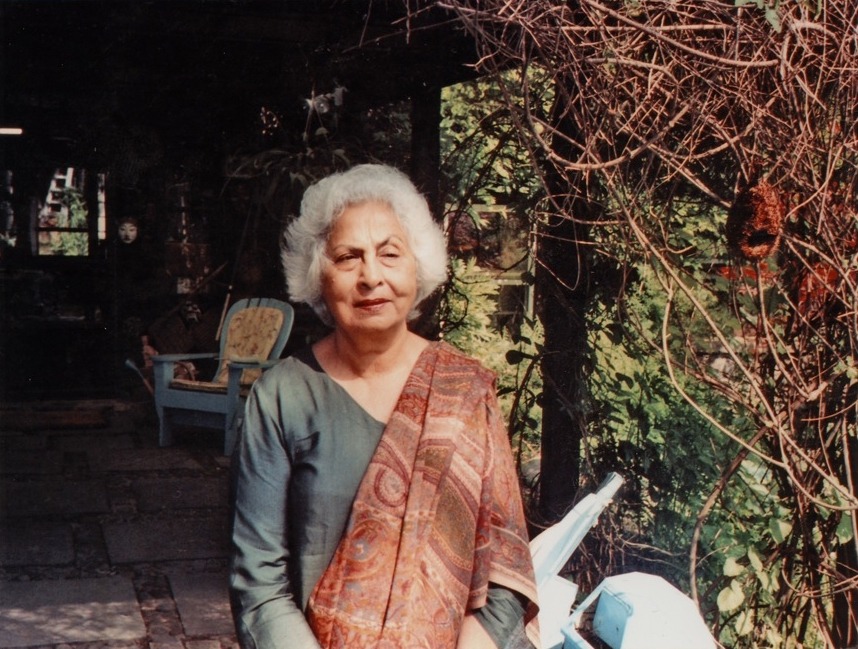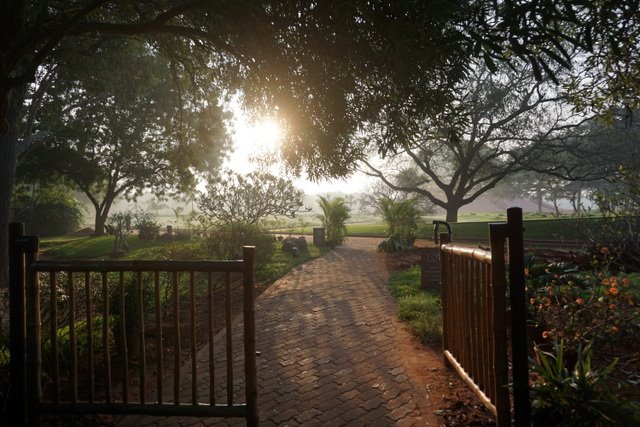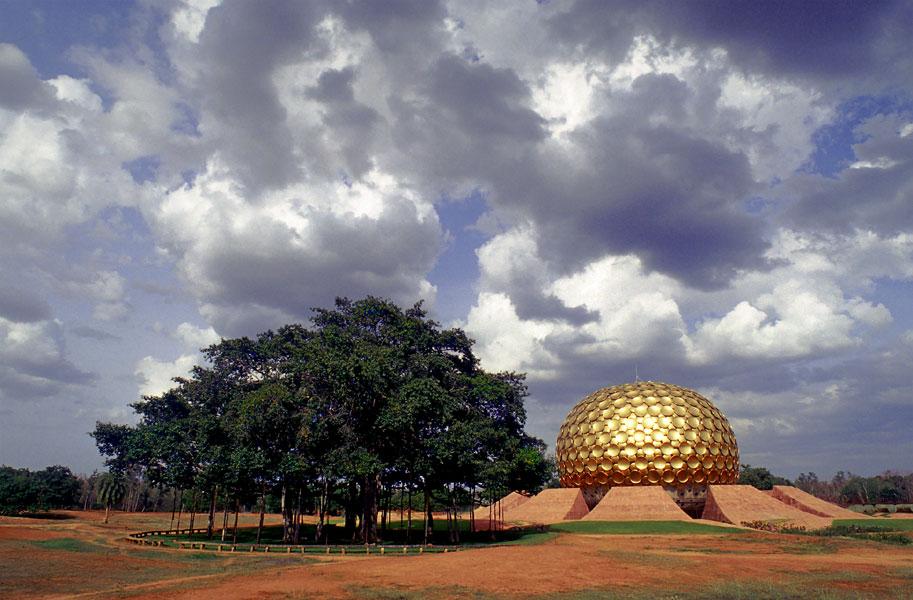
How did your association with Auroville begin?
As you might know, I was among the first children to come to the Ashram with my parents. Mother started the School later when our number increased.
I attended the Higher Course, as it was then called, at the Centre of Education. This was a five years’ period of study in specific subjects. After completing it, I wanted to read Sri Aurobindo’s works in the context of European thought. So I asked Mother whether I could go to Paris for this study. She readily agreed and seemed happy that my choice was “Paris”.
At the Sorbonne, I undertook work on a doctoral thesis on Sri Aurobindo and Henri Bergson, as a study in Comparative Philosophy. I believe that till then, Sri Aurobindo’s work was never accepted as a subject of study at the University. Sometime in 1969, I got permission from my professor to come back to the Ashram for about 6 months to do the writing of the thesis in quiet. At that time, I asked Mother what I should do once the thesis was completed. She said, “You will know when you are there [Paris].”
Soon after the thesis was submitted, early in 1970, I received a letter from André-da saying that the United Nations was celebrating its 25th anniversary by organising a World Youth Assembly in New York. Young people from all over the world were invited, and the Mother wanted Auroville to be represented there and She had thought of me for that purpose. At that point, I did not know much about Auroville. I had only been kept informed, by a long letter from Arati, describing in detail the ceremony of the inauguration and saying how very beautiful it was.
This is how, for the first time, Auroville came into focus for me. So I went to this World Youth Assembly. We were about 1500 young people. I was attached to the Indian delegation and participated actively. For three weeks, we discussed all the issues possible — education, culture, politics, economy — free of official, diplomatic intervention. It was very interesting.
Towards the end of 1970, I returned home to the Ashram. For a year I didn’t involve myself too much in activities as such. I just wanted to be — after the long time away! It was also a period when Mother was seeing very few people. Then in March 1972, on my birthday, I had a long meeting with Her. When I asked, “What should I do now?” She replied, “But I have already given you the indication!” Then She spoke at length. It was only much later that I realised that She had charted out an entire programme for life — perhaps for many lives! It took me even longer to understand — if I really do that even now — what that indication meant…. Such are Her ways.
But I was curious to learn about Auroville. What was this new experiment that Mother had started? Yes, the Ashram… one was practically born in it! But this? This new experiment? So I started visiting Auroville whenever I had a chance. In those early years, as you know, there was nothing there on the ground. No trees, no roads, no buildings, no water or electricity. Only red sand, — and canyons! But each time I went there I felt two things very strongly. First, a tremendous quality of ‘freedom’. Freedom not as it is often understood, or misunderstood, but as a state of ‘consciousness’ in which the outer personality is in harmony with the inner being — a feeling of ‘wholeness’. It was a new quality of freedom — with a feeling of ‘transparency” about it. And, second, I felt very powerfully what I would call, ‘Mother’s joy in Matter’.
It was a new experience. Perhaps, part of what Mother called the “Auroville Consciousness”. A ‘newness’ was there — of consciousness, of transparency, of greater possibilities of creativity, of almost a new ‘substance’.
This experience kept drawing me to Auroville. It was a little strange. On the one hand, I was engrossed in and enjoying the teaching work in Knowledge, speaking about Sri Aurobindo in many universities in the country and writing. But on the other hand, I somehow also felt the need to visit Auroville to renew that experience.
It was a period when I was speaking about ‘Matter’ in all my classes in Knowledge, from 7:45 to 11 a.m.! One day, when I went to Matrimandir to help with  the concreting work of the foundation, it hit me forcefully — as I was trying to shovel pebbles into a metal pan — that while I was ‘speaking’ so much about Matter, in reality I just could not relate to it! Not that I couldn’t do manual work, but ‘inwardly’ there was no contact with matter — not in terms of consciousness. You see, for me, Sri Aurobindo’s vision has not been a ‘philosophy’ to be studied — it is an experience that has to be lived, attempted, as far as one can do it. And here I was faced with a situation where there was a ‘gap’, a ‘hiatus’ between experience and words often spoken. Something had to be done. A new step seemed to be called for….
the concreting work of the foundation, it hit me forcefully — as I was trying to shovel pebbles into a metal pan — that while I was ‘speaking’ so much about Matter, in reality I just could not relate to it! Not that I couldn’t do manual work, but ‘inwardly’ there was no contact with matter — not in terms of consciousness. You see, for me, Sri Aurobindo’s vision has not been a ‘philosophy’ to be studied — it is an experience that has to be lived, attempted, as far as one can do it. And here I was faced with a situation where there was a ‘gap’, a ‘hiatus’ between experience and words often spoken. Something had to be done. A new step seemed to be called for….
That was the beginning of a new journey — of consciousness and matter! Gradually… it started to become clear that Auroville was a tremendous field for experiment in matter and it now offered the possibility of the experience that was needed. To have the consciousness grounded in matter, to relate to matter from within. Consciousness can take its station at many points — to be based in matter, gives it a special quality of effectiveness. This became the immediate next step to be taken in one’s own experience. As the process began, it was tough — but very joyful — both at the same time. In facing this reality of matter, one begins to see one’s own limitations, angularities. It is very difficult, challenging in the extreme but provides a rich field of experience. And I have slowly come to see that this is an integral part of Sri Aurobindo’s yoga of transformation.
Auroville is a collective experiment. Among all the experiments going on in the world, this experiment of Sri Aurobindo and the Mother is possibly the most difficult because it aims at a collective realisation, with far-reaching goals.
This collective experiment has been made possible by the long concentration of work done by Them in the Ashram. Auroville is like Ashram’s window on the world! An image that often floats by….
So then you moved to Auroville….
Yes, the line of experience reached a point where, by slow stages, I came to live in a house in Auromodèle — a house designed by Roger Anger whose inner space itself became a field of experience! This was the community, of which Mother said that it was the place for making all the experiments needed to learn to live in the future Auroville! It was not at all easy. I withdrew from teaching in Knowledge, a work that I loved. Auroville was going through its most impossible period of struggle, no infrastructure, no nothing really! Except that something of Mother’s which kept one there. At that point, I did not have the toughness needed to handle that situation but She kept me there — that is all I can say, and made the experience rich.
For a few years I immersed myself in physical work. Then in 1984, a Centre for Research in Indian Culture was to be started and this work came to me. Over the years, this became another field of learning.
What are the aims of the Centre?
It has basically three aims.
First, to create a space in Auroville which has the qualities of atmosphere and vibration that are characteristic of India. It was important that in the midst of Auroville’s international milieu, there be a space where one can ‘experience’ India, almost ‘feel’ her and lay a finger on her identity! Where Aurovilians can have access to India’s thought and culture and interact with her personalities. We used to invite artistes and professors to perform and speak and hold workshops. Today this work of cultural interaction has grown a great deal and Tapas is looking after it.
The second aim of the Centre was to re-discover the ancient Indian sensibilities. We have become so conditioned by Western ways of thinking, acting and feeling, we have almost lost our inner selfhood. There is a need to recover the perspectives, the attitudes, the processes that have been part of this culture. To learn to identify them and make them active in our personalities.
And, the third objective is to apply these perspectives, attitudes and processes to our handling of the contemporary problems facing the world. It is possible to do so, as all these problems exist in Auroville as well. Auroville is, as is often said, a microcosmic representation of the world. If a point is touched here, its echoes are heard all over! In fact, this has been a very interesting exercise for me. You see, over the years I also became involved in some ‘organisational’ bodies in Auroville. I have been part of the interaction of people and of groups, been at large meetings where decisions have to be taken together, hopefully! You see, there is no hierarchy in Auroville, which takes the decisions. Everyone has to arrive at them collectively! No easy task. In this exercise, for that is what it is, the attitudes and perspectives that one brings to bear on issues, the vibrations that go to dealing with a problem — these become very important. There is a great deal to learn from all this — how does life get moulded, changed.
Do you think Auroville needs more people from India?
Auroville needs more people as such — from all those countries which are so far not too well represented. Since a few years, a growing number of young people, well educated and very dynamic, from different parts of India have been coming to Auroville — and bringing in their skills and their aspirations. It would be good if there were some of the former students of the Centre of Education coming in. But these things are very individual — for some, the field of Sadhana is in the Ashram, for others it may be Auroville or both!
Why don’t more ex-students join Auroville? Why can’t some who join last out?
People in Auroville are really happy to have former students. They respect the background they have in the Mother and Sri Aurobindo. But the students need to have the curiosity to find out what Mother has wished to create in this experiment. It may not be for them — that is another matter. But to know about it is meaningful.
It is not easy for anyone to sustain the Auroville experiment. It is difficult — specially as it is a collective Sadhana. One has to be firm in one’s inner truth, with a sense of being in the right place given by Mother.
Can you tell us something about the relations between the Ashram and Auroville, the historical perspective, the present situation and the possible future interaction as you see it?
Today, one need not really dwell too much on the past. As you must know, for the first five years, from 1968 to 1973 there was a sense of oneness. People from the Ashram came for the inauguration and later they used to come to help with the Matrimandir work. Problems arose after 1973 and finally found a resolution with the passing of the Auroville Foundation Act in 1988. With the Auroville organisation stabilising itself, with people mellowing and changing, the situation is now happily very different. There is an easy ‘feel’, a smoothness — and a sense of mutual sharing in the work of Sri Aurobindo and Mother.
As for future interaction, you must see that there are two ‘fields of experience’ started by Them at different moments of man’s evolution. This kind of historical perspective, it seems to me, is important to remember. There is a dynamis, a process specific to each of them.
As far as individuals are concerned, there should be a curiosity to know — what the Auroville experiment is about. What is it that Mother has started? And what does the Ashram represent, founded by Sri Aurobindo and Mother and spanning almost an entire century….

My mother, (Violette-di), said just today, when she learnt that you are here for this interview, “One’s experience is not complete unless one has known both the Ashram and Auroville.”
I am ever grateful to Mother to have given me the possibility of being first in the Ashram and then in Auroville during the early years, at a time of intense concentration… to have seen them grow. And, always, to have been a part of both. They offer me the completeness I need.
The banyan tree is vast in its spread, being firmly anchored at the centre. May we be like the banyan….
This interview originally appeared in “Golden Chain” No 15



